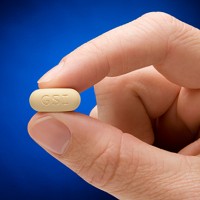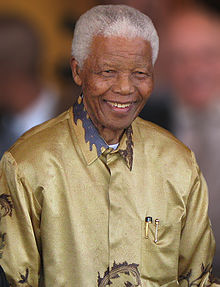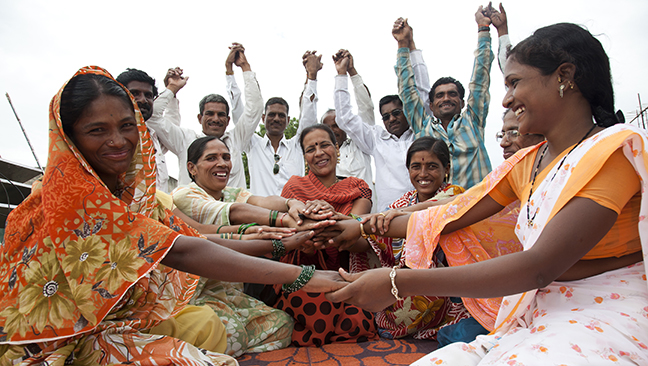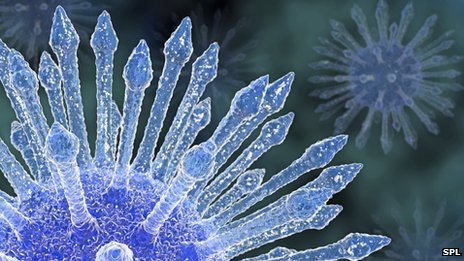Die Fixombination aus dem NS5B-Inhibitor Sofosbuvir (SOF) und dem NS5A-Inhibitor Ledipasvir (LDV) bei HCV Genotyp 1 wurde/wird derzeit in den Studien ION 1-3 an unterschiedlichen Patientengruppen mit unterschiedlicher Therapiedauer geprüft.
Archiv der Kategorie: English
Men with HPV prone to HIV infections & vaccine Cervarix®
Men who carry the human papillomavirus (HPV) have a higher risk of HIV infection. New data published in the Journal Aids indicate that infection with HPV is associated with a higher risk of infection with HIV, a precursor to Aids.
While the links between HPV infection and HIV in women have been widely studied, data about similar associations among men is limited.
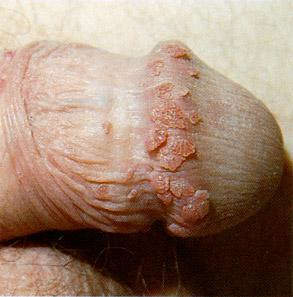
photo: the Genital Warts Solution
The study, conducted in Kisumu, Kenya by researchers from the University of North Carolina, adds to mounting evidence showing a higher risk of HIV infections among individuals with genital HPV infections.
Men in the study with at least one occurrence of HPV infection faced double the risk of acquiring HIV, while those with three or more HPV infections had more than three times the risk of developing HIV. This pattern was consistent in both circumcised and uncircumcised men.
Sofosbuvir / Ledipasvir Cures More than 90% of Genotype 1 Hepatitis C
Gilead Sciences this week announced sustained virological response rates from the Phase 3 ION trials testing a combination pill containing its newly approved HCV polymerase inhibitor sofosbuvir (Sovaldi) plus the NS5A inhibitor ledipasvir. Across the 3 studies, sofosbuvir/ledipasvir taken for 8 or 12 weeks cured more than 90% of treatment-naive and treatment-experienced genotype 1 patients.
مژده برای مبتلایان دو عفونت ویروسی با اچ آی وی و هپاتیت سی و یا بیماران مبتلا به ویروس هپاتیت سی. با تائید یک داروی ترکیبی جدید با نام Sofosbuvir/Ledipasvir از سوی پزشکان میتوان بیش از 90 درصد و به تائید شرکت دارویی Gilead اینک میتوان قریب به 94 درصد سخت ترین گروه هپاتیت سی ژن یک را نیز در مدت 8 هفته شفا داد.
The U.S. Food and Drug Administration this month approved sofosbuvir for use with ribavirin alone for people with HCV genotype 2 or 3, or as an add-on to pegylated interferon/ribavirin for those with genotype 1. While the agency said a longer course of sofosbuvir/ribavirin could be used for genotype 1 patients who cannot tolerate interferon, many still await more effective and shorter duration interferon-free regimens.
Gilead said it expects to request approval of the sofosbuvir/ledipasvir coformulation in early 2014, putting it on track for approval by the end of next year.
Hamba Kahle Tata Nelson Mandela: MSF pays tribute to „the greatest humanitarian“
* نلسون ماندلا، الگویی برای دادگری بشر * بمناسبت روز جهانی حقوق بشر
Nelson Mandela im Kampf gegen HIV & AIDS
زاده ۲۶ تیر ۱۲۹۷ برابر با ۱۸ ژوئیه ۱۹۱۸ – درگذشته در ۱۴ آذر ۱۳۹۲ برابر با ۵ دسامبر ۲۰۱۳) نخستین رئیس جمهور آفریقای جنوبی است که در انتخابات دموکراتیک عمومی برگزیده شد. وی پیش از ریاست جمهوری از فعالان برجستهٔ مخالف آپارتاید در آفریقای جنوبی و رهبر کنگره ملی آفریقا بود. او به خاطر دخالت در فعالیتهای مقاومت مسلحانه مخفی محاکمه و زندانی شد. مبارزه مسلحانه، برای ماندلا، آخرین راه چاره بود؛ او همواره پایبند به عدم توسل به خشونت بود.[۱] ماندلا در طول ۲۷ سال زندان، که بیشتر آن را در یک سلول در جزیره روبن سپری کرد، مشهورترین چهرهٔ مبارزه علیه آپارتاید در آفریقای جنوبی شد. گرچه رژیم آپارتاید و ملتهای طرفدار آن وی و کنگره ملی آفریقا را کمونیست و تروریست میدانستند، مبارزه مسلحانه بخشی جداییناپذیر از مبارزه علیه آپارتاید بود. ماندلا پس از آزادی از زندان در سال ۱۹۹۰، سیاست صلحطلبی را در پیش گرفت، و این امر منجر به تسهیل انتقال آفریقای جنوبی به سمت دموکراسیای شد که نماینده تمامی اقشار مردم باشد.
’Speak Out’ Campaigns Against HIV Stigma

Vincent Fuqua, left, talks with some of the men who attended a recent reception to introduce the new Speak Out social media campaign.
(Photo: Jane Philomen Cleland)
The signs are hard to miss.
Exit a Muni train at the Castro station, and the wall-sized posters are greeting you as the doors slide open. The message – it is time to start talking about HIV and AIDS. Or, as Vincent Fuqua, program coordinator for the San Francisco Department of Public Health put it, „find our voice again.“
„As long as people are still becoming infected with HIV, as long as people are still HIV-positive,“ Fuqua said, „it’s still a part of us.“
India HIV / AIDS Alliance
Recommendation on Integrase Inhibitor Use in Antiretroviral Treatment-Naive HIV-Infected Individuals from the HHS Panel on Antiretroviral Guidelines for Adults and Adolescents
Introduction
In the February 12, 2013, version of the Health and Human Services (HHS) Guidelines for the Use of Antiretroviral Agents in HIV-1-Infected Adults and Adolescents, the Panel recommendations on initial combination regimens for the antiretroviral therapy (ART)-naive, HIV-infected patient include raltegravir (RAL) plus tenofovir disoproxil fumarate/emtricitabine (TDF/FTC) as the preferred integrase strand transfer inhibitor (INSTI)-based regimen, and elvitegravir (EVG)/cobicistat (cobi)/TDF/FTC as an alternative regimen for patients with estimated creatinine clearance (CrCl) ≥70 mL/min. Since the release of the Guidelines, a new INSTI, dolutegravir (DTG), was approved for use in ART-naive and ART-experienced patients. Additionally, long-term follow-up data (up to 144 weeks) from randomized clinical trials have demonstrated the durable safety and efficacy of EVG/cobi/TDF/FTC.
continue reading / weiterlesen / ادامه مطلب
HIV antibodies ‚have potent impact‘
By James Gallagher
Health and science reporter, BBC News
A potential new HIV treatment has a „profound and unprecedented“ impact on the virus, according to animal studies published in the journal Nature.
Potent antibodies were able to wipe a hybrid of human and monkey immunodeficiency viruses from the bloodstream of monkeys within days.
continue reading / weiterlesen / ادامه مطلب
HIV+ young women have adequate response to human papillomavirus vaccine
HIV positive girls did not respond as well to the quadrivalent human papillomavirus (HPV) vaccine as HIV negative girls of the same age, but they responded as well as HIV negative older women, probably giving them sufficient protection from infection, according to a late-breaker presentation at the recent IDWeek conference in San Francisco.
Human papillomavirus can trigger abnormal cell proliferation and cause warts, tissue abnormalities (dysplasia or neoplasia), and malignancies including cervical and anal cancer.
A new and more virulent strain of HIV in Russia
New and more virulent strain of HIV is spreading rapidly through Russia, claim scientists
- The HIV subtype 02_AG/A is spreading rapidly and is now thought to account for more than 50 per cent of new HIV infections in Siberia
- It is thought to be the most virulent subtype of the virus in Russia
- Infections have also been reported in Chechnya, Kyrgyzstan and Kazakhstan
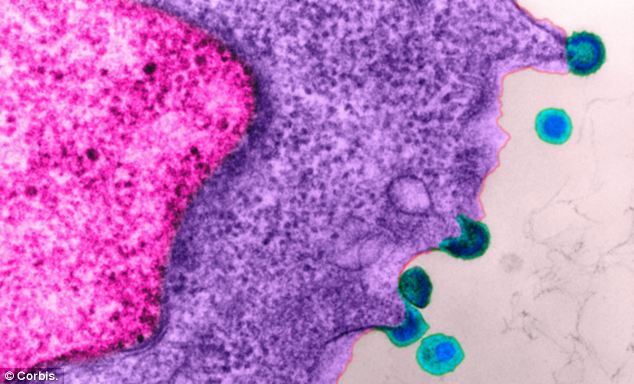
Russian scientists believe they have identified a new and more virulent strain of HIV. The subtype, known as 02_AG/A, is spreading rapidly. Image shows mature HIV virus infection.
It was discovered by scientists at the State Research Center of Virology and Biotechnology VECTOR in Siberia, The Moscow News reports.
Natalya Gashnikova, head of the retroviruses department at Vektor, said 02_AG/A could spread through the population much more quickly than the current main HIV strain found in Russia.
The number of HIV positive people in Novosibirsk has jumped from 2,000 in 2007 to 15,000 in 2012, according to Russia’s Federal AIDS Centre and 50 per cent of the new cases have been caused by 02_AG/A.
The newly identified subtype is not confined to Siberia – cases have also been reported in Chechnya, in the south of Russia, and Kyrgyzstan and Kazakhstan.
HIV can be divided into two main types – HIV-1 and HIV-2. HIV-1 is the more virulent of the two and is, therefore, responsible for the majority of cases.
HIV-1 can also be divided into subgroups and the newly discovered 02_AG/A is a subgroup of HIV-1.
All of the subgroups are transmitted from person to person through the same transmission methods – including unprotected sex and sharing needles – but some are easier to pass on than others.
02_AG/A is thought to be easier to transmit than some other subtypes.

The virus was first seen in the city of Novosibirsk in 2006 and is thought to be the most virulent subtype of the virus in Russia. It is now thought to account for more than 50 per cent of new HIV infections in Siberia.
UN figures show that the only regions where the number of HIV infections is increasing are Eastern Europe and Central Asia – 52 per cent of people with HIV in this area live in Russia.
This is believed to be partly because there is little awareness of HIV in many parts of Russia and because Russian school offer very little sex education.
The number of new HIV infections globally has plummeted by a third since 2001 and more than halved among children, the United Nations recently revealed.
Globally, 2.3 million people contracted the AIDS virus last year – down 33 per cent from 2001, while 260,000 children became infected – 52 per cent less than in 2001.
‘The annual number of new HIV infections continues to decline with especially sharp reductions in the number of children newly infected with HIV,’ UNAIDS executive director Michel Sidibe said.
Last year, 1.6 million people died of AIDS-related deaths, down from 1.8 million in 2011 and 2.3 million in 2005.
The report showed that 9.7 million people in low and middle-income countries, the bulk of those infected, had access to HIV drugs last year, compared to only 1.3 million seven years earlier.
While the hike is impressive, it falls short of a UN target announced two years ago to reach 15 million people by 2015.
Some 35.3 million people were living with the virus last year – about 70 per cent of them in sub-Saharan Africa – up from 30 million in 2001.
Source: Daily Mail

